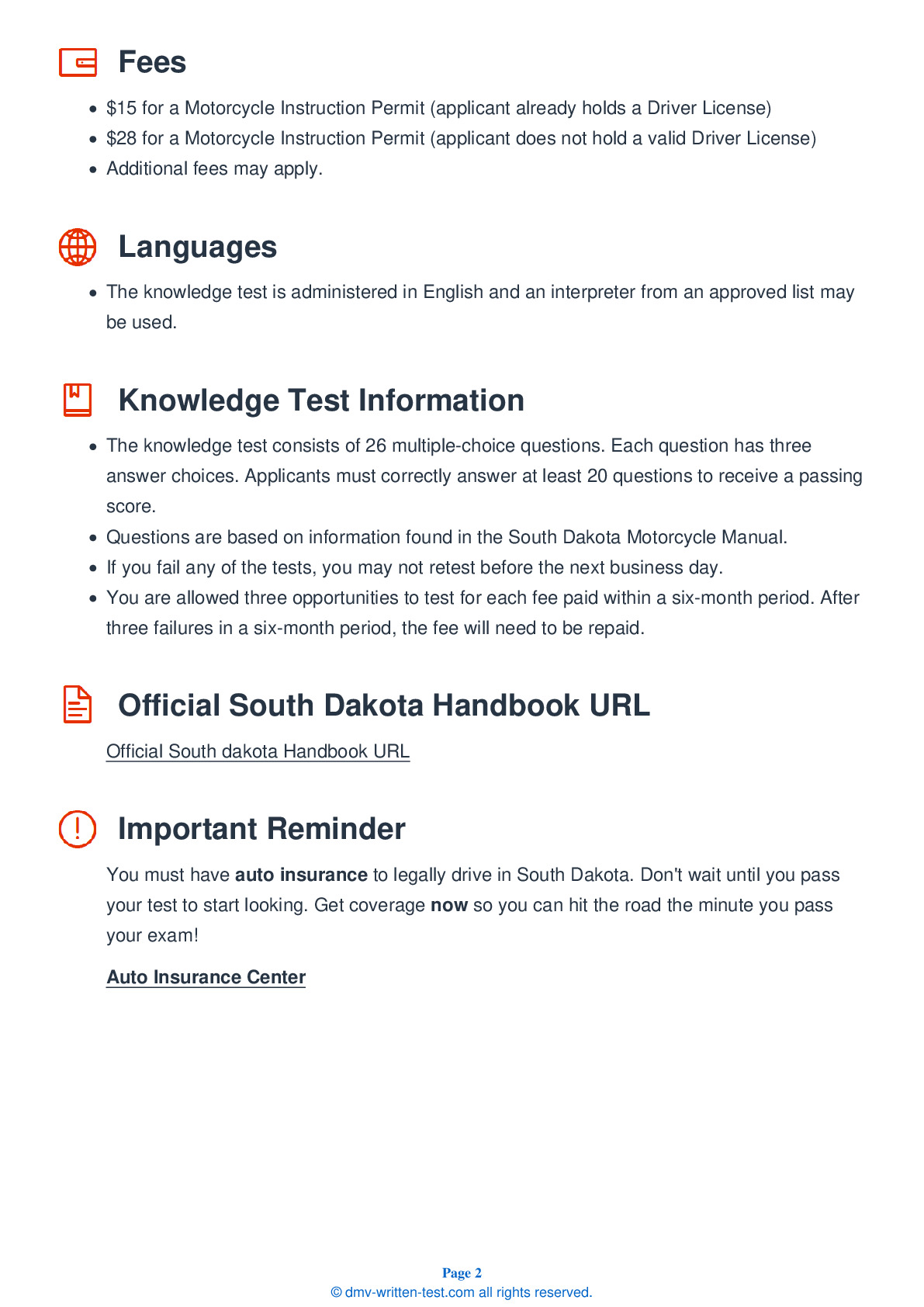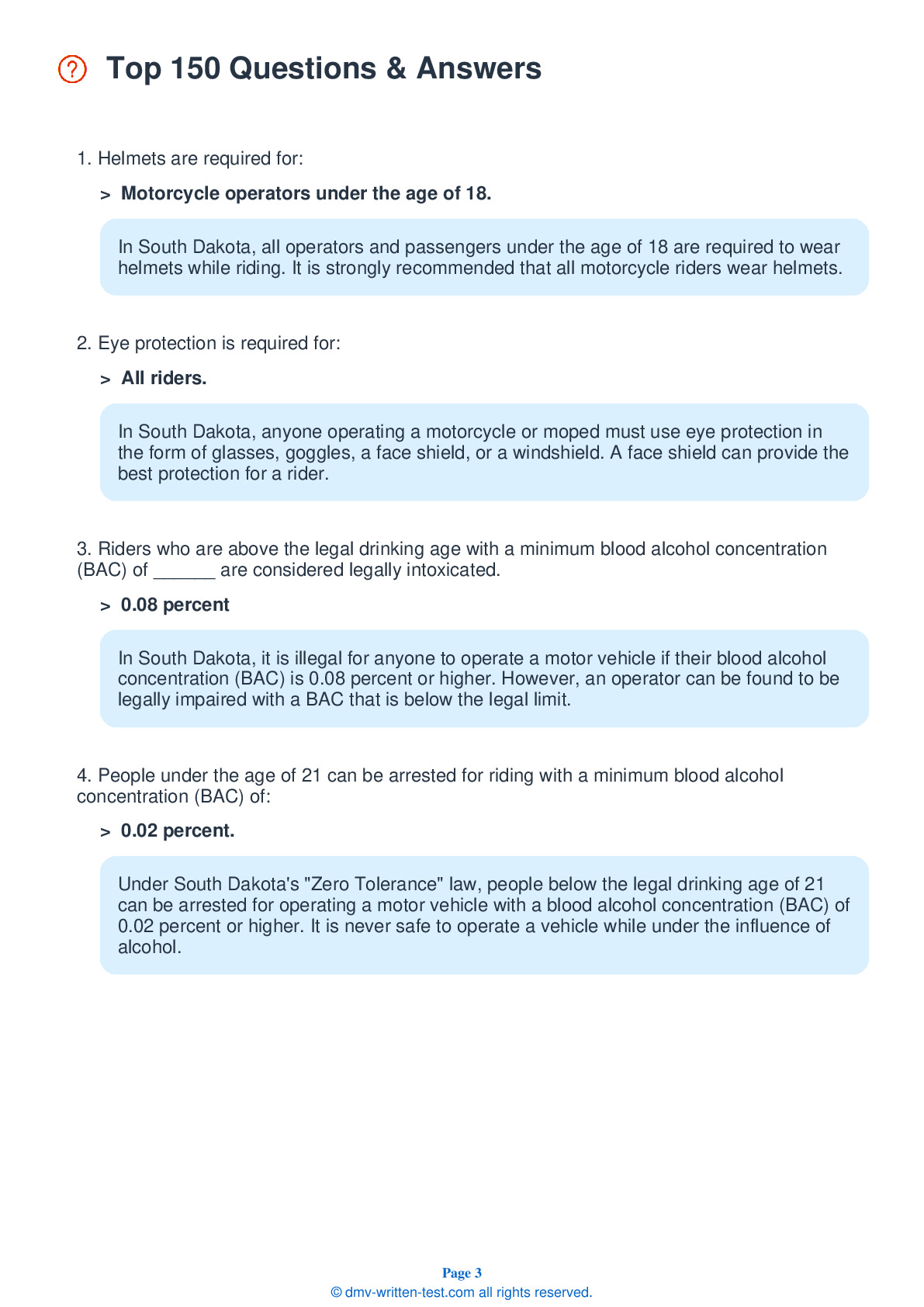2025 South Dakota Motorcycle Permit Test 11
The following questions are from real DMV written motorcycle permit tests. These are some of the actual permit questions you will face in South Dakota when getting your motorcycle learners permit. Each motorcycle theory practice test question has three answer choices. Select one answer for each question and select "grade this section." You can find this button at the bottom of the drivers license quiz. For a complete list of questions and answers for South Dakota please visit https://cheat-sheets.dmv-written-test.com/en/south-dakota/motorcycle.
Number of Tests
Number of Question
Passing Score
13. Footrests:
Explanation
Keep your feet firmly on the footrests for balance. The motorcycle should be equipped with passenger footrests. Firm footing prevents your passenger from falling off and pulling you off, too.
14. When approaching a blind intersection, riders should:
Explanation
When approaching a blind intersection that is controlled by a stop line or stop sign, you must first stop where indicated. You may then edge forward and stop again just short of where the cross traffic lane meets your lane. From that position, lean your body forward and look around buildings, parked cars, or bushes to see if anything is approaching. Make sure your front wheel stays out of the crossroad while you are looking.
15. When changing lanes, you should:
Explanation
Before changing lanes, make sure no other drivers are going to be in your path. Do this by checking your mirrors and looking over your shoulder in the direction you want to move.
16. Where is the greatest potential for conflict between you and other vehicles?
Explanation
The greatest potential for conflict between motorcycles and other traffic is at intersections. Oncoming cars turning left in front of motorcyclists is the biggest danger.
17. Under normal conditions, a motorcyclist should maintain a following distance of at least:
Explanation
Motorcyclists should maintain a minimum two-second following distance under normal conditions. Any time conditions are less than perfect, a larger following distance is recommended.
18. When making a non-emergency stop on a motorcycle:
Explanation




